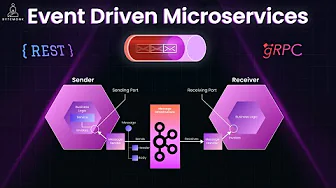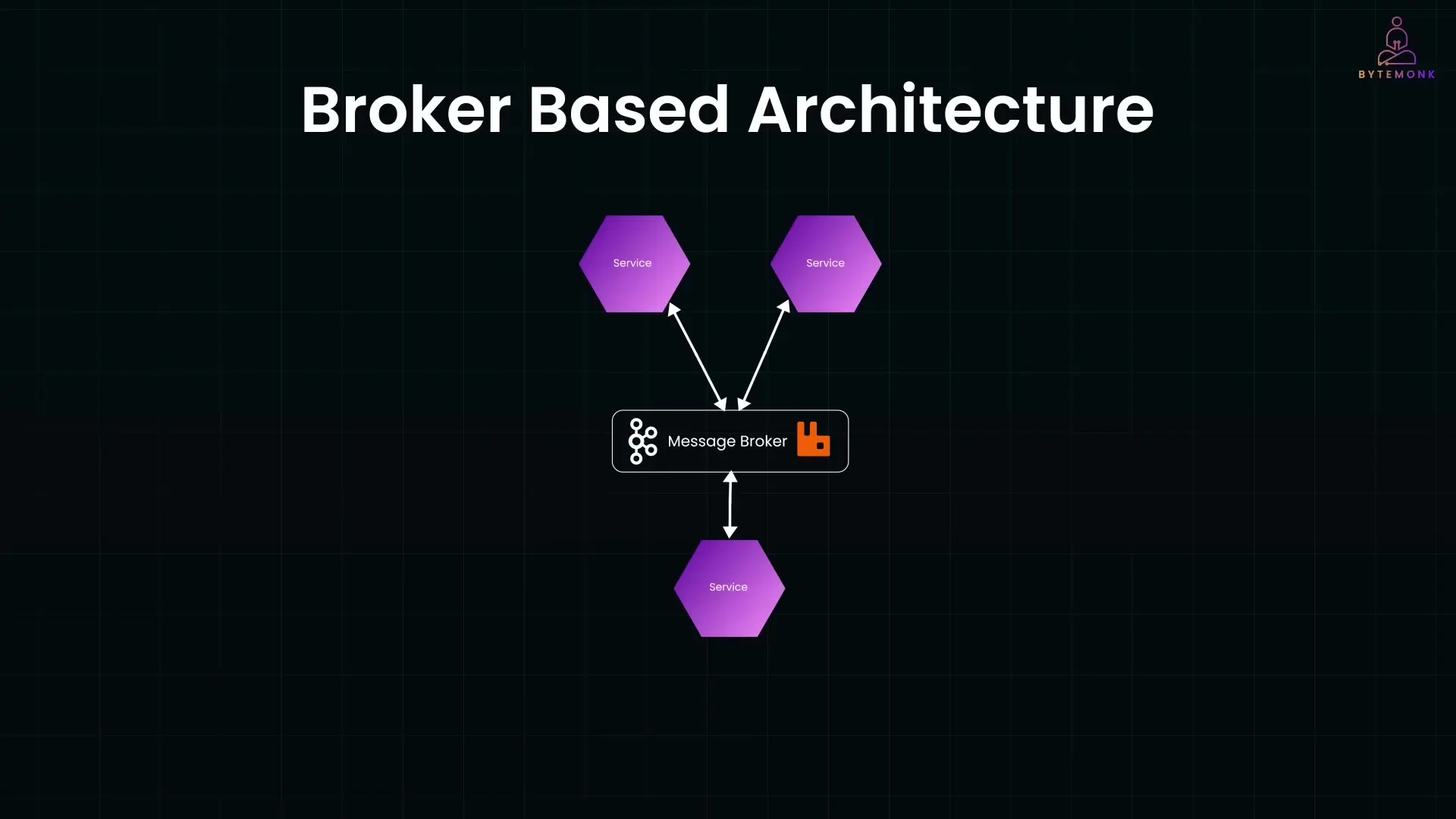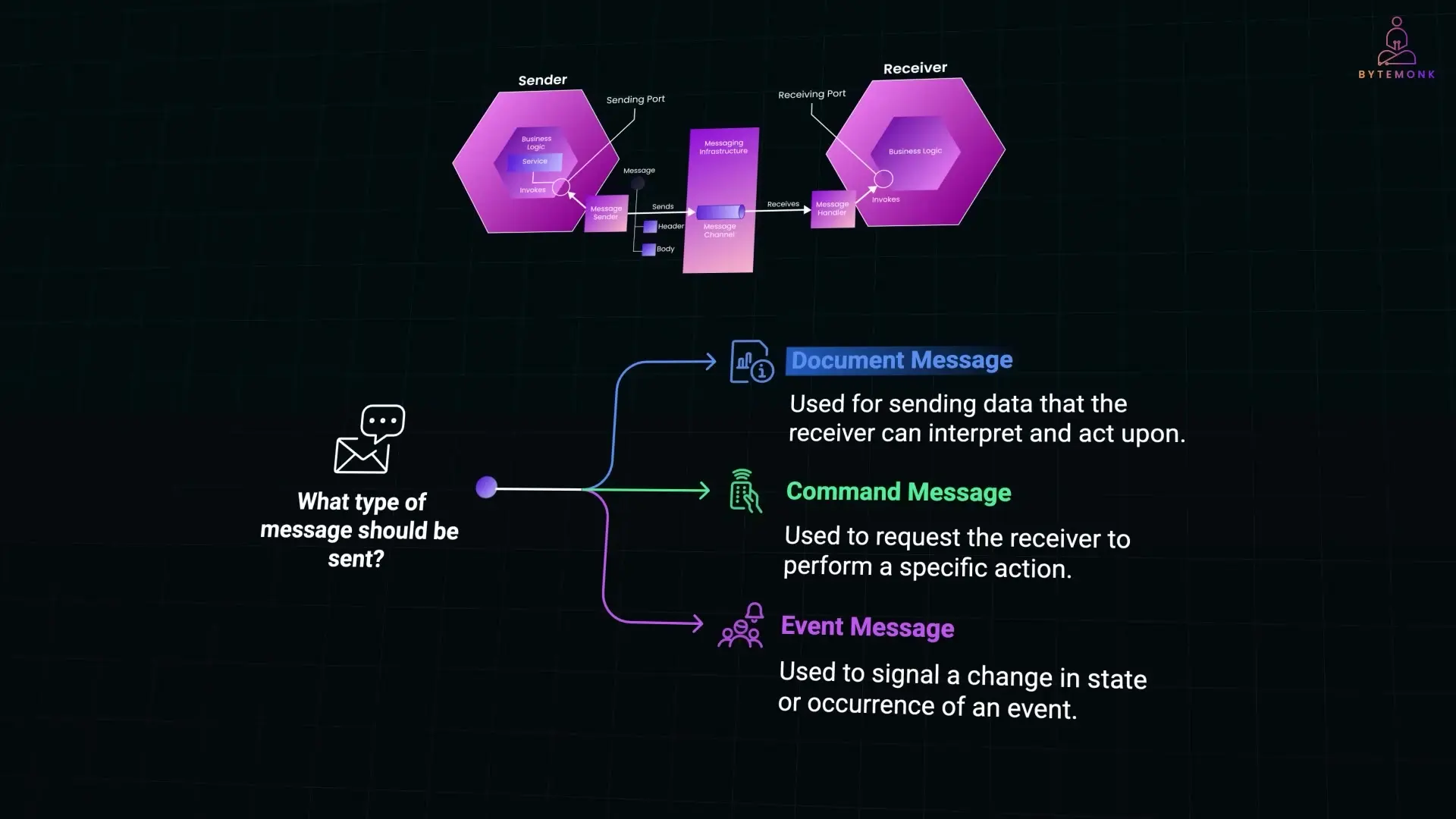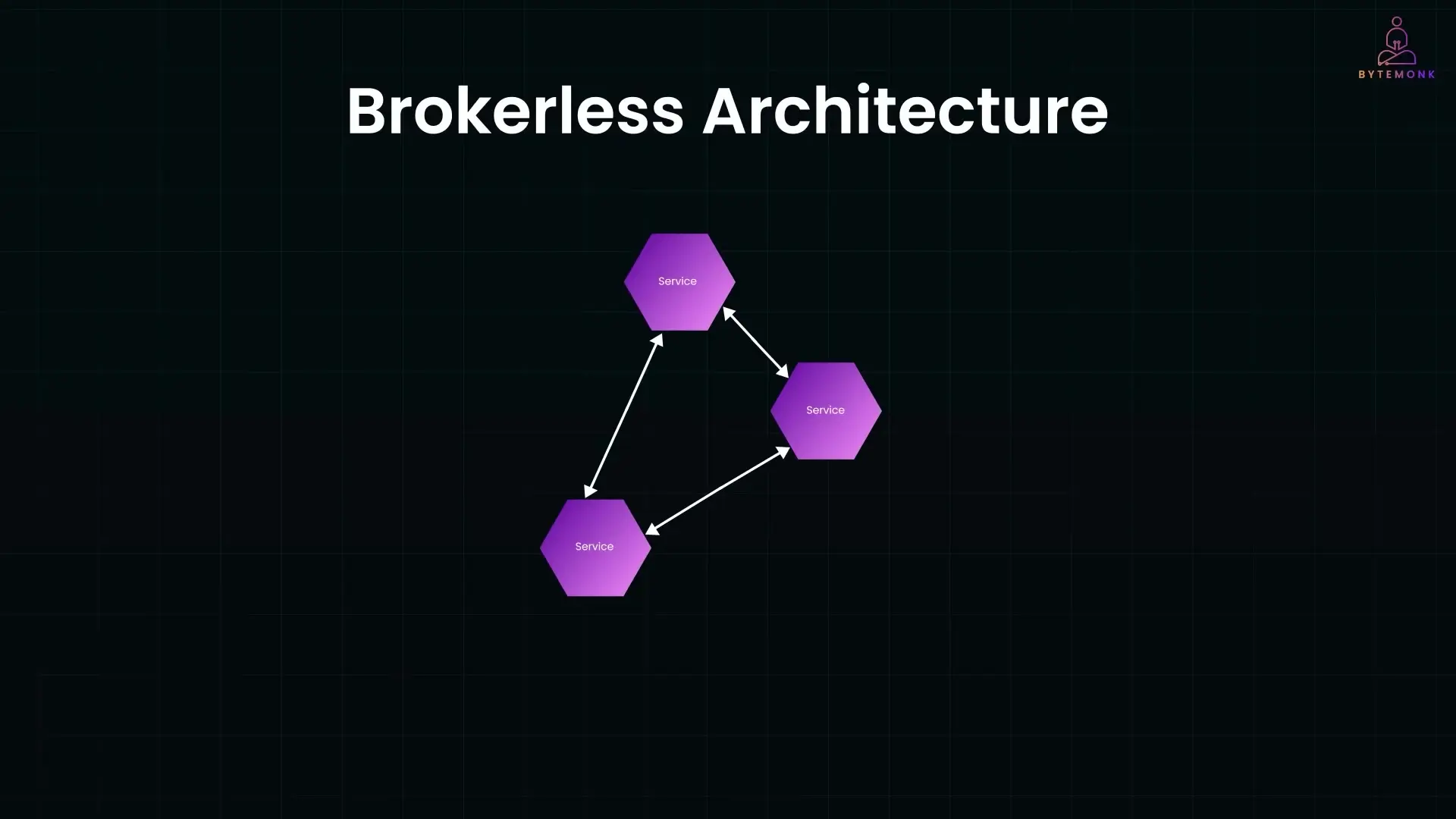
As microservices architectures continue to dominate modern application development, understanding effective communication patterns between services becomes crucial. While synchronous communication methods like REST and gRPC have their place, asynchronous message-based communication offers distinct advantages for building truly scalable, resilient systems.
Understanding Asynchronous Messaging
In asynchronous messaging, services exchange messages without waiting for immediate responses. This fundamental difference from synchronous communication creates a more loosely coupled system where services can operate independently. When a client needs something from another service, it sends a message and continues its operations without blocking. If a response is needed, it arrives later as a separate message.
Most messaging systems use a message broker (like Kafka or RabbitMQ) to route messages between sender and receiver, though brokerless setups are also possible. The broker acts as an intermediary, ensuring messages reach their destination even if the receiving service is temporarily unavailable.

The Anatomy of Messaging Systems
A practical way to understand messaging comes from the concept of message channels - virtual pathways that connect senders and receivers. Let's break down the key components:
Message Structure
Every message consists of two main parts:
- Header: Contains metadata like message ID, timestamp, and return address
- Body: Contains the actual data payload (can be text or binary format)
Message Types
Messages generally fall into three categories, each serving different purposes in a microservices ecosystem:
- Document Messages: Contain pure data; the receiver decides what to do with it
- Command Messages: Function like remote procedure calls, asking the receiver to perform a specific action
- Event Messages: Signal that something has happened (e.g., "OrderPlaced"), commonly used in event-driven architectures

Message Channels
Channels connect senders and receivers, acting as virtual pipelines for message delivery. The sender's business logic communicates through a sending port, which uses a sender adapter to push messages into the channel. On the receiving end, a handler adapter listens to the channel and passes incoming messages to the receiver's port, which triggers the appropriate business logic.
There are two primary types of channels, each supporting different interaction patterns:
- Point-to-Point Channels: Ensure each message is delivered to only one receiver, ideal for command messages where a specific action is expected from a single service
- Publish-Subscribe Channels: Broadcast messages to all subscribed receivers, perfect for event messages where multiple services need to react to the same event
Interaction Patterns in Messaging Systems
Messaging supports various interaction styles, making it incredibly versatile for microservices architecture:
Asynchronous Request-Response
When a client expects a reply but doesn't want to block while waiting, it can use asynchronous request-response. The client sends a command message through a point-to-point channel, including a message ID and return address. The service processes the request and sends a reply to the specified channel with a correlation ID matching the original message ID. This allows the client to match responses to their corresponding requests.
One-Way Messaging
When no response is needed, one-way messaging simplifies the process. The client sends a message, and the service handles it without sending a reply.
Publish-Subscribe Notification
For broadcasting events to multiple services, publish-subscribe channels excel. For example, an order service can publish "OrderPlaced" events to an order channel, and services like delivery, billing, and notifications can subscribe to react accordingly.
Brokerless vs. Broker-Based Messaging
There are two main approaches to implementing asynchronous messaging in microservices:

Brokerless Messaging
In brokerless setups, services communicate directly without intermediaries. Tools like ZeroMQ enable this approach, offering advantages like lower latency and reduced network overhead. However, this comes with significant drawbacks:
- Services need to know each other's locations, requiring service discovery
- If either sender or receiver is down, messages can be lost
- Implementing guaranteed delivery, retries, and message durability becomes complex
Broker-Based Messaging
Broker-based architectures introduce a dedicated message broker (like RabbitMQ, Kafka, or ActiveMQ) between services. While this adds a layer of complexity, it provides substantial benefits:
- Reliable message delivery with built-in retry mechanisms
- Message persistence ensures no data loss even during service outages
- Loose coupling as services don't need to know about each other
- Better availability since the broker can queue messages when receivers are down
For most real-world systems, especially at scale, a broker-based approach is the more resilient choice, which is why it's the standard for enterprise applications.
Message Broker Implementations
Different message brokers implement channels in their own ways:
- JMS brokers (like ActiveMQ): Use queues for point-to-point and topics for publish-subscribe
- RabbitMQ (AMQP-based): Uses exchanges that route messages to queues
- Kafka and Kinesis: Use topics and streams
- AWS SQS: Supports queues only, but can be paired with SNS for publish-subscribe
- Cloud services (Google PubSub, Azure Service Bus): Support both interaction styles through subscriptions
Benefits of Broker-Based Messaging for Microservice Scalability
Broker-based messaging offers several advantages that make it ideal for scalable microservices architectures:
- Loose coupling: Services communicate via channels without direct knowledge of each other
- Built-in buffering: Messages wait in the broker until services are ready to process them
- Pattern flexibility: Supports request-response, one-way commands, and event publishing
- Distributed system awareness: Forces developers to consider the realities of distributed computing
Potential Challenges
While messaging offers many benefits, it's important to be aware of potential challenges:
- Potential bottlenecks if the broker becomes a performance checkpoint
- Communication stalls if the broker goes down (mitigated with high-availability setups)
- Operational overhead of installing, configuring, and monitoring the broker
Despite these challenges, the benefits typically outweigh the drawbacks for resilient, decoupled, and scalable microservices architectures.
Advanced Messaging Considerations
When implementing message-driven systems, several design challenges require careful consideration:
- Competing consumers: How to distribute messages among multiple instances of the same service
- Message ordering: Ensuring messages are processed in the correct sequence when order matters
- Duplicate handling: Strategies for dealing with accidentally duplicated messages
- Idempotent consumers: Designing receivers that can safely process the same message multiple times
- Message tracking: Following messages across service boundaries for monitoring and debugging
- Transactional messaging: Combining messaging with transactions for improved reliability
Conclusion
Asynchronous messaging provides a powerful foundation for building scalable, resilient microservices architectures. By decoupling services, buffering communication, and supporting various interaction patterns, messaging addresses many challenges inherent in distributed systems. While it introduces some complexity, particularly with broker-based implementations, the benefits for large-scale systems are substantial.
For most enterprise applications, a broker-based messaging approach with tools like Kafka or RabbitMQ offers the right balance of reliability, scalability, and operational manageability. By understanding the core concepts of messaging—channels, message types, and interaction patterns—developers can design microservices that communicate effectively while maintaining loose coupling and resilience.
Let's Watch!
Mastering Asynchronous Messaging in Microservices Architecture
Ready to enhance your neural network?
Access our quantum knowledge cores and upgrade your programming abilities.
Initialize Training Sequence